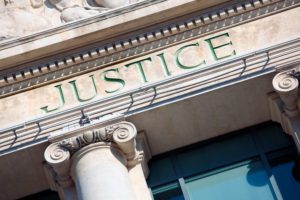 Justice Solomon continued in relevant part: The juror yield for pools summoned beginning on September 21, 2020 was comparable to the Bergen Vicinage’s February 2020 yield. Defense counsel attacked the hybrid process, claiming a lack of transparency and of juror demographic data; the purportedly unclear standards with which prospective jurors were excused and deferred; and the possibility that prospective jurors who were older, of modest means, and/or lacking in technological access were disproportionately excluded. The trial court rejected defendant’s contentions both as time-barred under Rule 1:8-3(b) and on the merits, opining that the pre- and post-pandemic selection processes were substantially similar, and that defendant’s arguments were “based on nothing more than conjecture and innuendo spun from inaccurate information and rumors.”
Justice Solomon continued in relevant part: The juror yield for pools summoned beginning on September 21, 2020 was comparable to the Bergen Vicinage’s February 2020 yield. Defense counsel attacked the hybrid process, claiming a lack of transparency and of juror demographic data; the purportedly unclear standards with which prospective jurors were excused and deferred; and the possibility that prospective jurors who were older, of modest means, and/or lacking in technological access were disproportionately excluded. The trial court rejected defendant’s contentions both as time-barred under Rule 1:8-3(b) and on the merits, opining that the pre- and post-pandemic selection processes were substantially similar, and that defendant’s arguments were “based on nothing more than conjecture and innuendo spun from inaccurate information and rumors.”
After the Appellate Division affirmed, defendant was convicted of and sentenced for resisting arrest/eluding, terroristic threats, attempted aggravated arson, and attempted aggravated assault. The Court granted direct certification “limited to defendant’s challenge to the hybrid virtual/in-person jury selection procedure.”
The pre-voir dire disqualification, excusal, or deferral of jurors is not a stage at which defendant is entitled to be present or be represented, and defendant has failed to support his representative-cross-section claim. In recognition of the important issues raised, but not nearly substantiated, in this appeal and to better assist New Jersey courts in preventing potential underrepresentation and irregularities stemming from the hybrid process and other facially neutral selection procedures, the Court directs the AOC to begin collecting jurors’ demographic information.
The trial court correctly determined that defendant’s filed challenge was untimely. Rule 1:8-3(b) directs that “[a] challenge to the array shall be decided before any individual juror is examined.” Relaxation of that time-bar is granted only upon a prima facie showing of actual prejudice to defendant’s right to a fair and impartial jury. Here, defendant waited for two hours and through the questioning of thirteen prospective jurors before filing his challenge, and counsel’s reliance on notice of a likely challenge to the jury pool is unpersuasive. Further, defendant does not set forth a prima facie claim of actual prejudice warranting relaxation of Rule 1:8-3(b)’s time-bar.
Politics and the current social climate must have played a role in the Court’s decision to grant certification on this race-based issue. These are important strategic consideration with regard to the preservation of issues for appeal.
